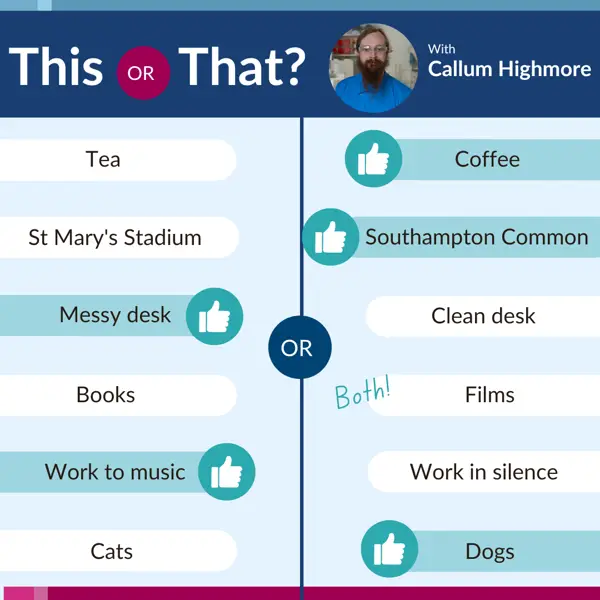Combating antibiotic resistance: Meet Callum Highmore
Southampton researchers are advancing a quick and accurate method to diagnose bacterial infections.
Antibiotics are used to treat or prevent some types of bacterial infection. They are becoming less effective due to overuse in recent years.
Researchers in our NIHR Southampton Biomedical Research Centre (BRC) are developing a new tool to diagnose infections in minutes. This could help counter antimicrobial resistance.
Dr Callum Highmore is driving the project forward. He shares his journey to date and how he is being supported by a one-year BRC Postdoctoral Bridging Fellowship.
How did you become interested in research?
Conducting research gives you a small role in peeling back the big mysteries of the universe, which is an unmissably cool prospect. Working on clinical research has the potential to improve lives at scale. To me, no career could be more worthwhile and interesting.
I completed my PhD at Southampton in 2018, which focused on improving food safety through microbial detection methods.
My PhD coincided with the launch of the National Biofilms Innovation Centre (NBIC), and I was lucky enough to be offered a position as an NBIC Research Fellow. Through this position I have been able to develop my own research path and interests, which has led me to this project.
What is the healthcare challenge that you are seeking to address?
Antimicrobial resistance (AMR) is a global public health challenge. It threatens to reverse advances made in modern medicine over the past 80 years.
AMR was associated with 4.95m deaths in 2019, and this is estimated to increase to 10m annually by 2050. Its prevalence is accelerated by the overuse of unnecessary or ineffective antibiotic treatments.
A culture-free rapid diagnostic tool is needed to recommend effective antibiotic treatments for increasingly adaptive infections.
Bacteria culture tests are the standard approach for identifying what type of bacteria caused an infection. They are time-consuming and labour-intensive, and delays can negatively impact clinical outcomes.

What do you hope to achieve in your research at the BRC?
My Fellowship is aiming to move our rapid diagnostic technology from the lab bench to patient samples.
We are using an innovative technology called Multi-Excitation Raman Spectroscopy to cut diagnosis times from days to minutes. Our pilot data shows it can detect antimicrobial resistance across different types of bacteria.
This Fellowship serves to de-risk our future work by applying our methodology to samples from cystic fibrosis patients with respiratory infections.
The findings will support a larger study to develop an AI-powered diagnostic tool that uses laser wavelengths to identify whether bacterial cells in clinical samples are resistant to antibiotics.
Long term, I hope to see this technology up and running in the clinic!
How would you sum up your fellowship in three words?
Sputum, bacteria, lasers
What's it like being an early career researcher in Southampton?
Research at Southampton is great! We have access to brilliant technologies and expertise here, and strong links with national and international collaborators.
Thanks to my involvement with the NBIC, I've had the opportunity to lead my own research projects. I've also benefitted from internal and external funding sources.
What advice would you give other early career researchers?
- Ensure you have space for creativity in your life.
- Whenever possible, don’t check your emails at home.
- Take advice from others with a pinch of salt. There are so many routes through a research career, and everyone has a unique situation.